It’s time for a change of tableware, I think.
I’m invoking sunshine, warmth and country living with Rooster Meadow, by Pfaltzgraff. Isn’t that chick the cutest thing?
Rooster Meadow is one of those timeless patterns that warms the heart, without putting a strain on the pocketbook. This colourful rooster struts across the salad plate, his turquoise tail feathers fluffed and luxuriant.
It seems to me that sunflowers are available any time of year now; chrysanthemums have been forever. Why not gather some up for a sunny-side-up table in the dank months of winter?
They climb up the sides of the dinner plate, heads bobbing cheerfully.
Turquoise Venetian juice glasses picked up the similarly coloured elements on the plates along with “Blue Smoke” hemstitched napkins from Pottery Barn (long discontinued, but they now have a casual cotton offering in the same colour).
A sitting hen from Homesense joined a couple of rooster salt and pepper shakers.
The flatware is Sawyer by World Market. The Acacia Wood chargers were from Amazon. The ones I got seem to be unavailable, but these look close.
Cock-a-doodle-do!!!
I’m striving to maintain my cheerfulness as we batten down for the second day of an ice storm. All the trees are coated with a thick layer of ice and walking outside is taking your life in your hands, It’s pretty, but also pretty treacherous. “Freezing drizzle” is how it’s been described. Yuck, I say. Time for homemade soup, a good book and snoozing dogs by the fire.
Speaking of good books, I just finished reading a book I received for Christmas: Great English Interiors by David Mlinaric and Derry Moore.
It’s absolutely scrumptious, with stunning pictures and a short history of some of the finest houses from the 15th century onwards. I’d never really appreciated how house styles changed as the need for fortification diminished with the advent of gunpowder. Fortified manor houses used to have plain blank walls facing outward, and any light was gained from the rooms open to internal courtyards. That makes sense. Starting in the 15th century, however, houses like Haddon Hall, began showing expanses of glass on the outward facing windows.
You might remember me commenting on the oddly constructed windows with the rippling glass. The authors give an explanation of those in the book.
Other properties photographed in the book include Chatsworth, West Wycombe. Waddesdon, and several I haven’t seen, some of which are private homes, such as Heveningham Hall, below. Isn’t that plasterwork to die for? (the actual picture in the book is much better).
New Wardour Castle has been turned into a block of flats. Flat 1A, now owned by Jasper Conrad, includes the staircase shown below.
Some of the other houses are open only a few days a year, such as Wilton House and Stratfield Saye (the country house of Admiral Nelson). And those few days just happen to coincide with our upcoming trip in April. Seeing them may well invoke some delicate marital negotiation as neither of them is conveniently located relative to our plans, and I’m already trespassing upon the driver’s good graces with some inconveniently situated cathedrals. Ahem… Wish me luck!
I’m sharing this post with Between Naps on the Porch and The Scoop.




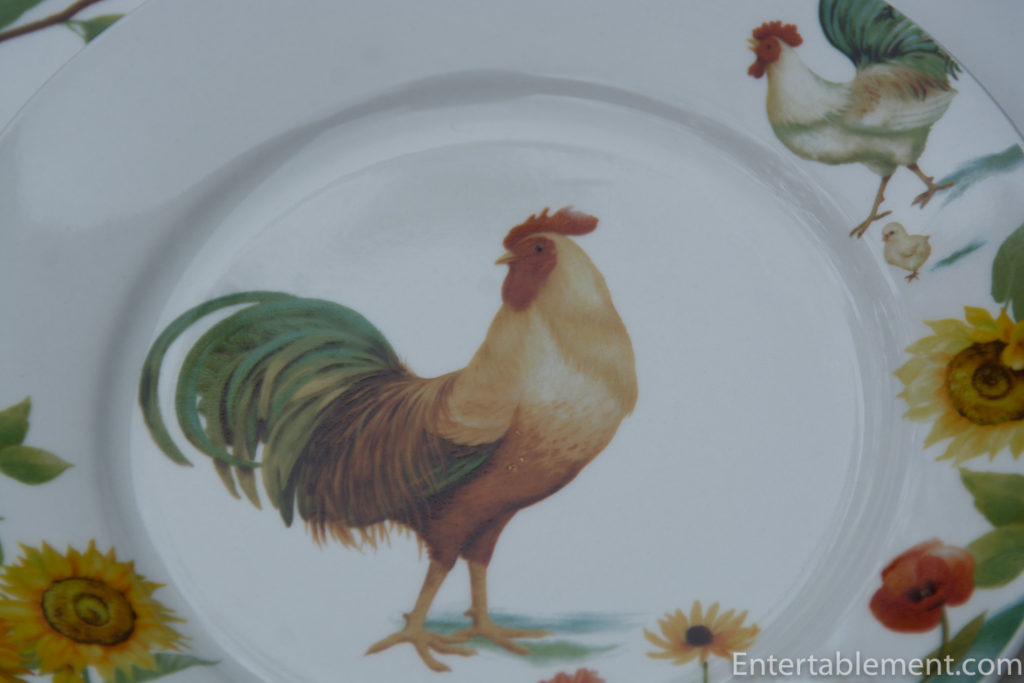


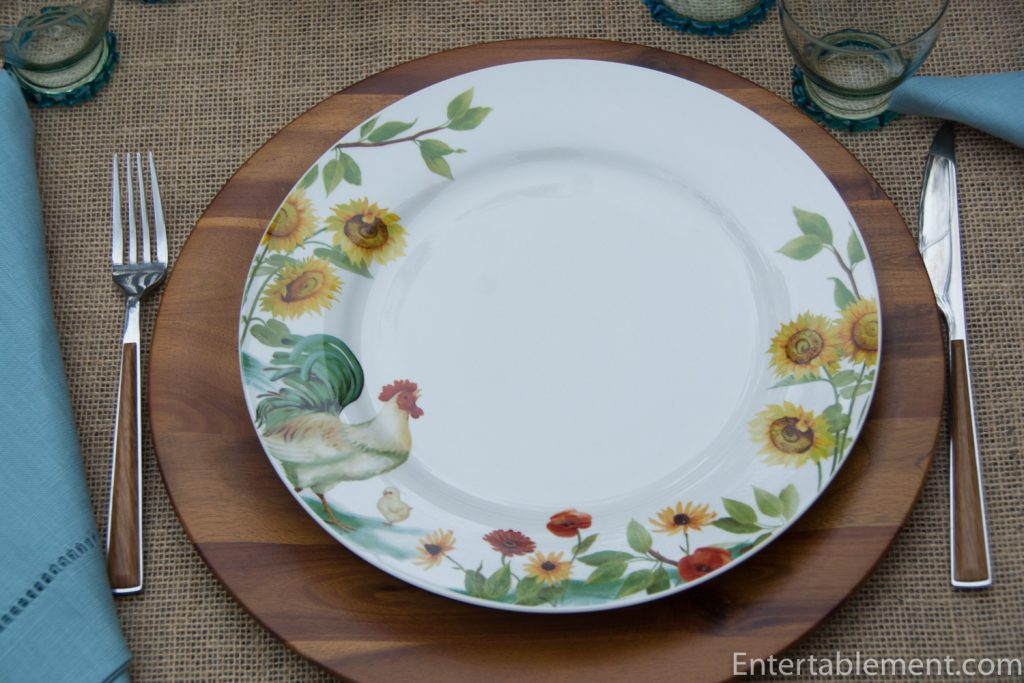


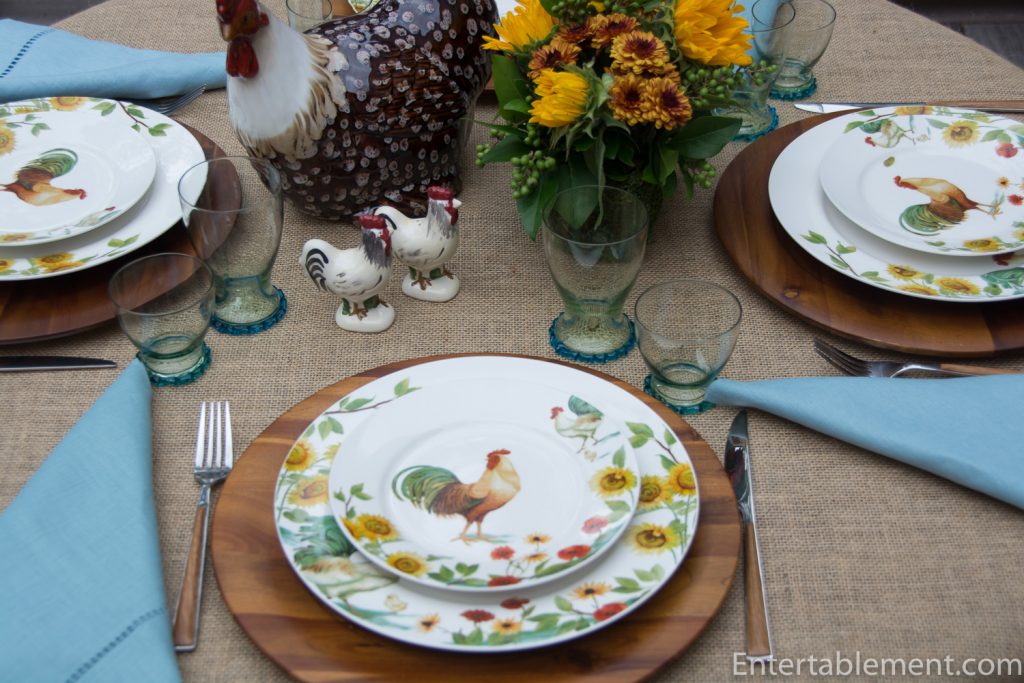



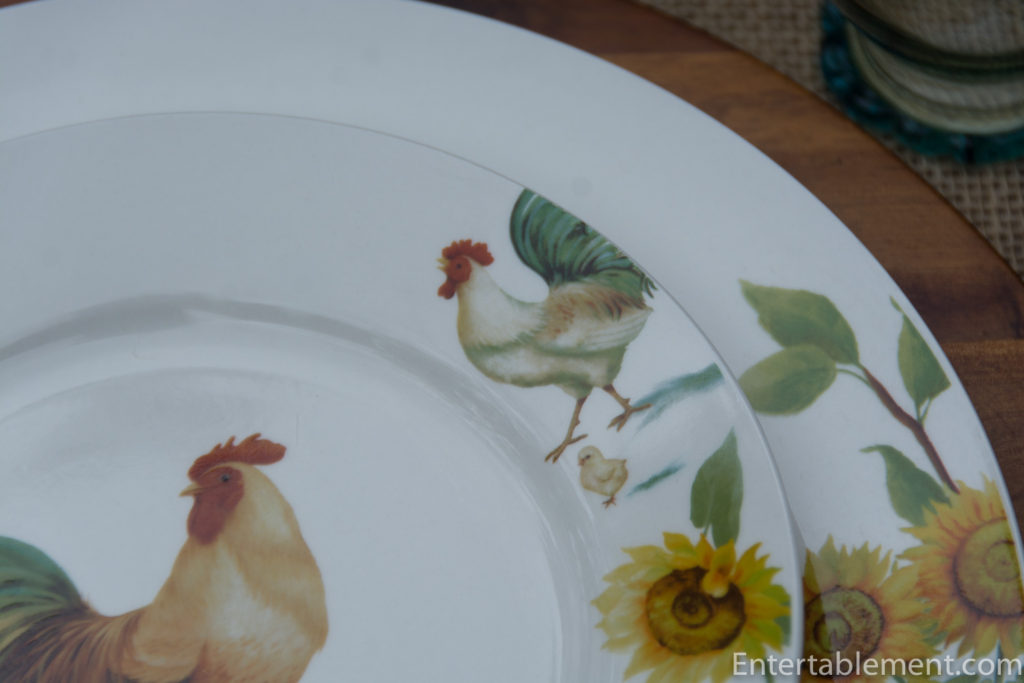


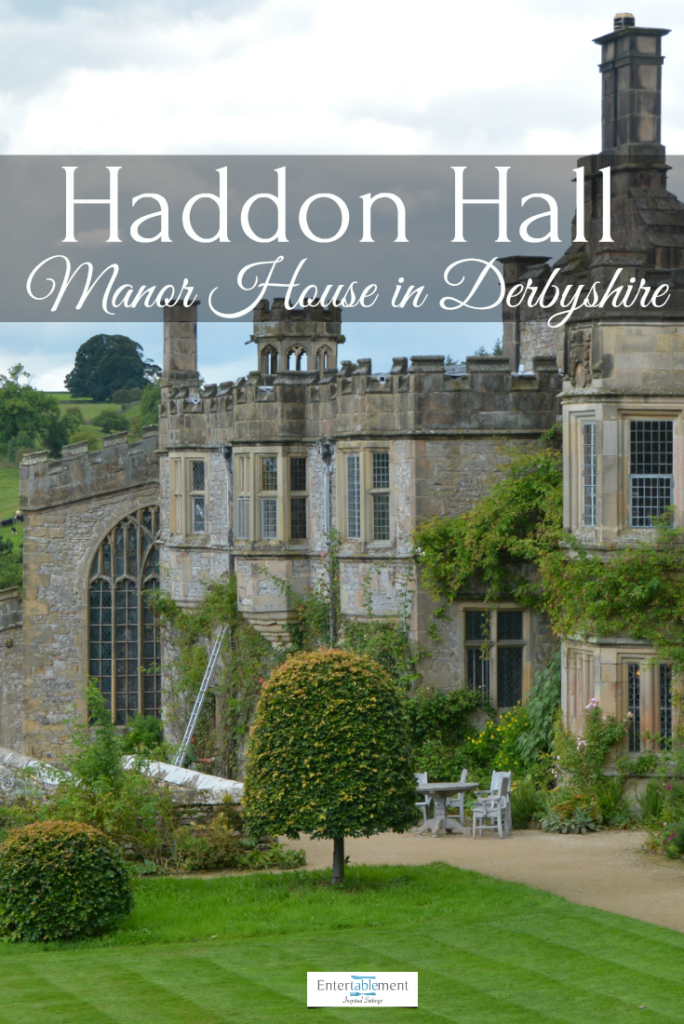
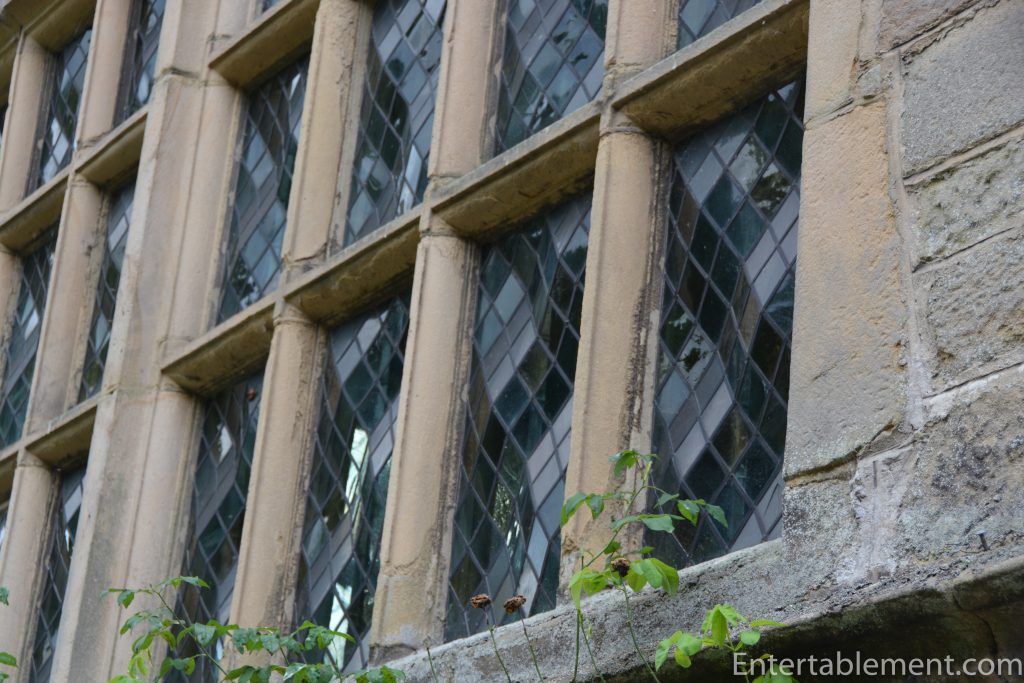
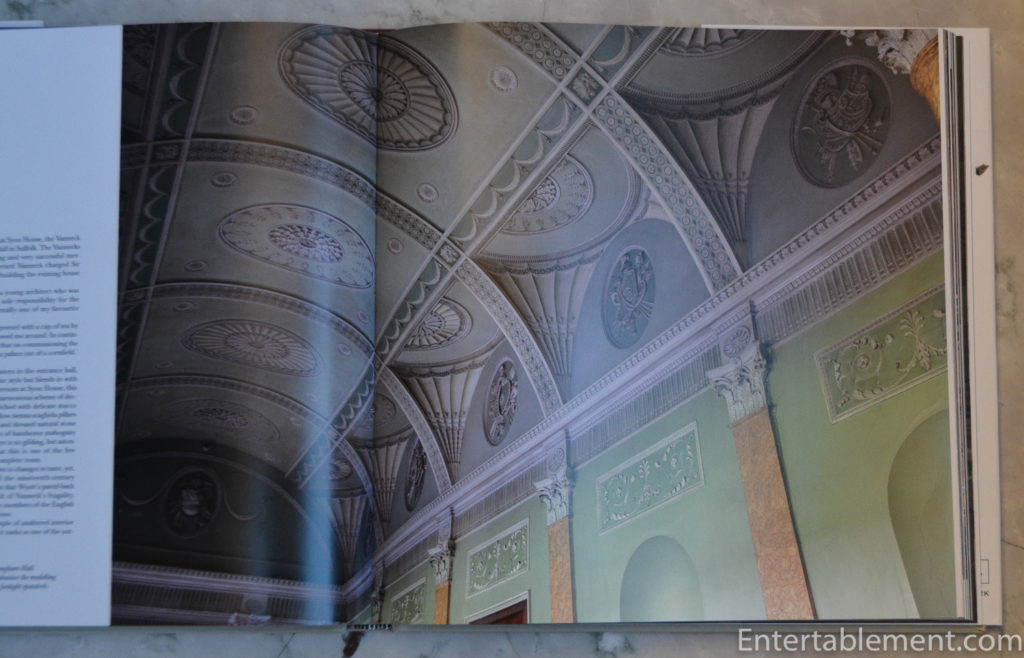
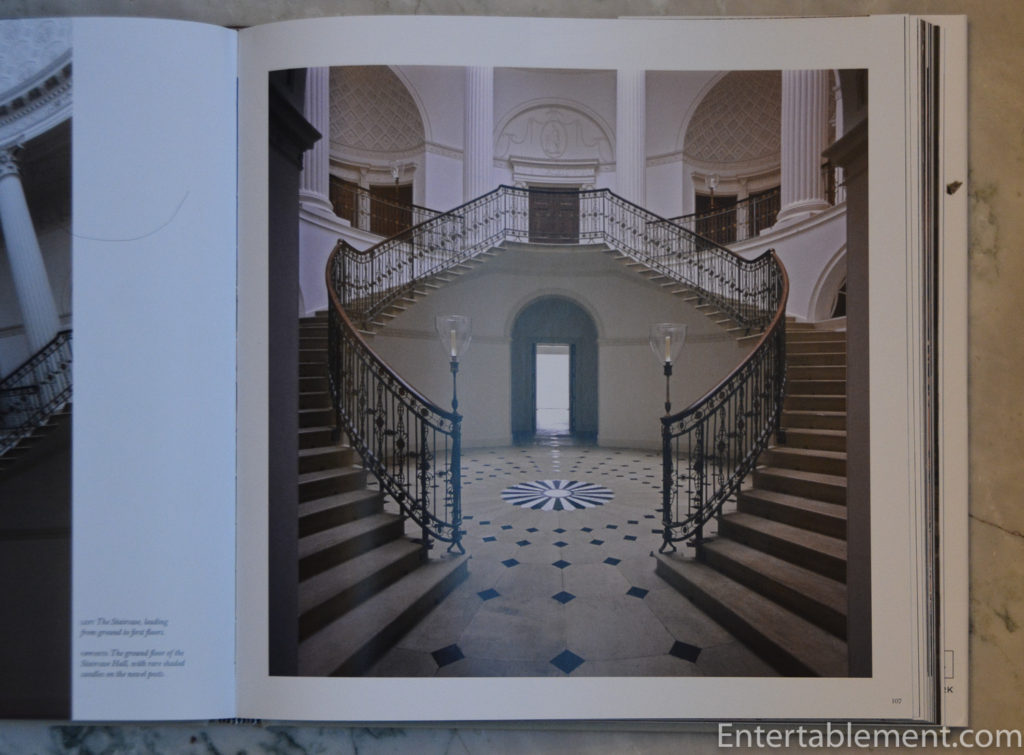

Those plates are adorable as I find roosters and chickens very amusing and fun to watch. So many feral ones here in Hawaii. Regarding those rippling windows, we had them in our English Tudor when we lived in the UK. They are called leaded lights and they expand with the warm weather and look wavy because they are put together with lead which expands and contracts depending on the weather. At least that’s what our windows did. And , they’re not double glazed. But, very pretty to look at!
I love rooster and chicken plates, too – they’re a very popular theme – all kinds of choices! I didn’t know Hawaii had feral chickens. How fun!
Your explanation makes perfect sense re the contraction and expansion of the lead in the windows. Lead is so soft, and more susceptible to heat as a result. Thanks for that!
Dear Helen, I second Maura’s leaded window comment…had them in England too. In a rigid stone window, they may have been the only technology that worked at the time.
Chickens: Having encountered Hawaii’s feral chickens, I can say they are not cute–skinny, fast, and armed and dangerous, what with those spurs! And the giant hens who roam our Alpine garden from the next farm look like roller derby queens. lol.
Wish I could send you some warm and clear gorgeous early-spring weather from here, where the Phalaenopsis orchids are just starting to bloom, and my tables already reflect the colours of bougainvillea and bananas awakening from their short winter nap (extra leaves are great for wrapping pork on the BBQ).
I’ve not seen a prognosis for the spring in Europe–still chest-deep in snow, and OH still shoveling. Hope your post-Brexit trip goes well…what a disaster awaits the UK, no matter what happens, sadly.
Cheers, Beatrice
It’s brilliant technology, the ever-changing window!
You’ve disappointed me about the feral chickens, though I can’t say I’m terribly surprised. Chickens are not what you’d call affectionate at the best of times. I love the roller derby queen reference. My very proper Grandfather used to love that program, especially “skinny Minnie”. Oh, that brings back chuckles.
Enjoy your warm weather, Beatrice. We’ll be there eventually! And like you, I fear what post-Brexit is going to look like. There seem to be no options on the table that are going to satisfy anyone right now, let alone the majority. What a mess!
You’re well-travelled, Helen. Thank you for taking me on a virtual vacation!
I do love love love rooster themes. This set is especially nice as the dinner & salad plates line up when stacked.
I’ve got to get back to the travel blogs. It seemed almost indecent during lockdown – kind of like dangling food before starving people. As things start to open up, though…